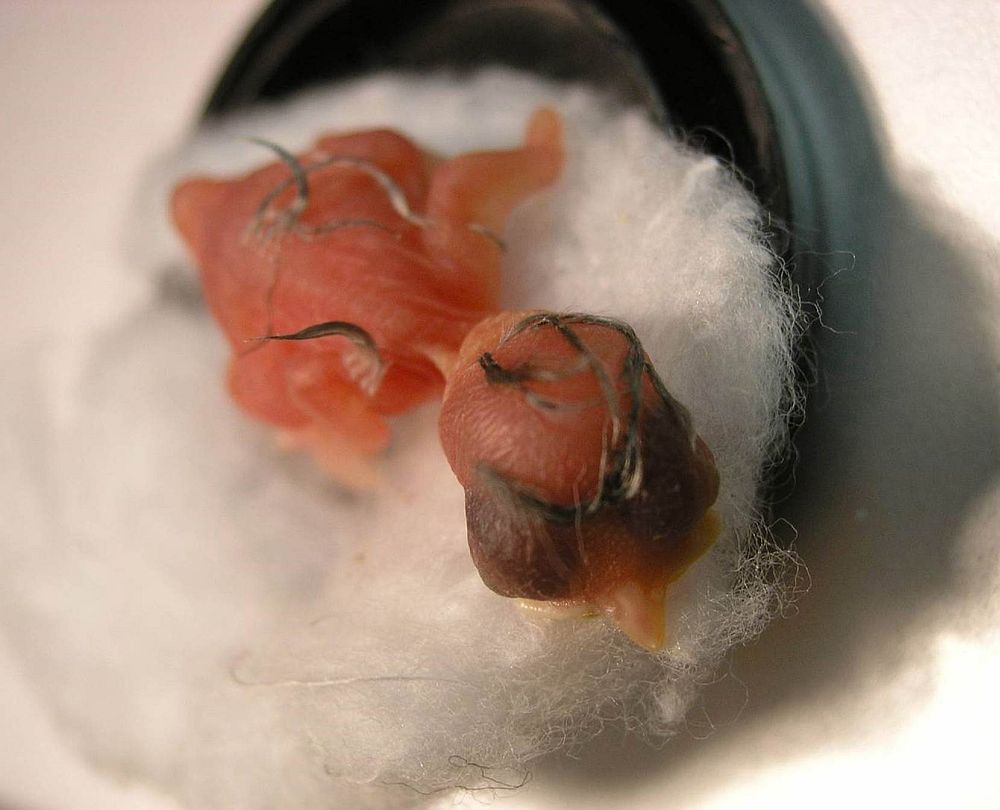Great Tit Year science news edted by UT bird ecologist Marko Mägi,marko.magi@ut.ee
Translation Liis
All chicks do not hatch at the same time and so there are chicks of different ages together in the nests. The so-called asynchronous hatching is the result of starting incubation immediately when an egg is laid. While for instance the chicks of birds of prey hatch at intervals of a couple of days then the small passerines start their incubation when the clutch is complete and all chicks hatch as a rule within 24 hours. Still, considering the fast development of passerines, a hatching 24 hours later may influence the future significantly – the chicks hatched later are smaller and often they do mot succeed to grow into fledging age. The occurrence of asynchronous hatching among passerines poses the question why such a phenomenon occurs at all and are there any benefits in it? The so-called tasty chick hypothesis has been proposed according to which the smallest chick will be sacrificed to parasites and diseases so that the others might grow better on account of the sacrificed one. This however is not the whole truth since the female birds can direct resources to the last laid eggs that accelerates the growth of the chick in them and the belated hatching need not be a reason to sound the emergency bell at once.
The bird ecologists at the University of Tartu studied the fate of asynchronously hatched great tit chicks and tried to find some answers to the questions about how negative a late hatching might be and if the late hatchers still might have some hope. Until then it had been assumed that the later hatched chicks may suffer because of their disadvantageous starting position and for instance losing at food begging to the larger chicks. The growth rate of the chicks was studied because if asynchronous hatching were to be useful it could be supposed that the later hatching would be compensated by a growth spurt of late hatched chicks.

The newly hatched chicks of great tits weigh barely 1,5 grams, but they grow fast, achieving their maximum growth rate by the 5th-6th day of life. / Photo: Marko Mägi
To find an answer an asynchronous hatching was experimentally induced in great tit nests which made it possible to observe the growth of chicks of different ages. The body mass of a newly hatched great tit did not depend on the order of hatching but differences were noted in the growth rate of chicks – the growth rate of synchronically hatched chicks and those hatched with an interval of 2 days was significantly faster compared to chicks hatched with a delay of one day. The chicks hatched with a delay of 2 days achieved a maximal growth rate at the same time as the synchronically hatched siblings, on the 5th-6th day, but the chicks with a delay of 1 day somewhat later. Such results do not exclude a competitive advantage of earlier hatched chicks but do point at a possible compensation of late hatching by faster growth. In this the growth rate depends on the initial delay – later hatched chicks grow faster.
The asynchronous hatching may in varying environmental conditions turn out to be an evolutionarily useful strategy which makes it possible to rear the belated chicks in a food-rich year to catch up on the others, and in a year poor in food to sacrifice the weaker offspring in order to increase the chances of the others. There is however no point in delaying the hatching unlimitedly since at least in the present study no chick with a delay of 3 days survived to the 5th day of life.
Tilgar V, Mänd R, 2006. Sibling growth patterns in great tits: does increased selection on last-hatched chicks favour an asynchronous hatching strategy? Evolutionary Ecology 20:217–234. DOI 10.1007/s10682-005-5877-x



